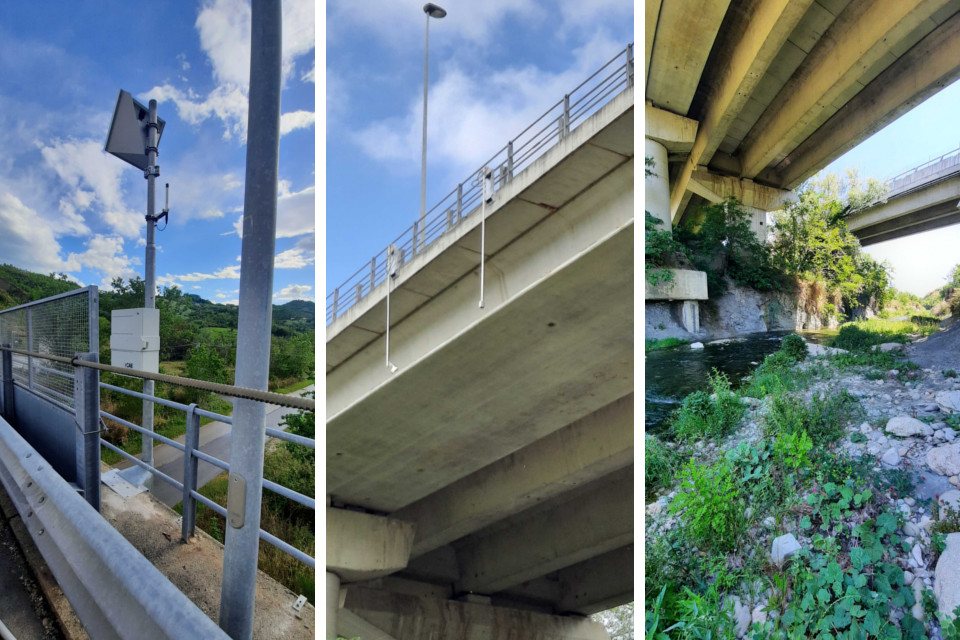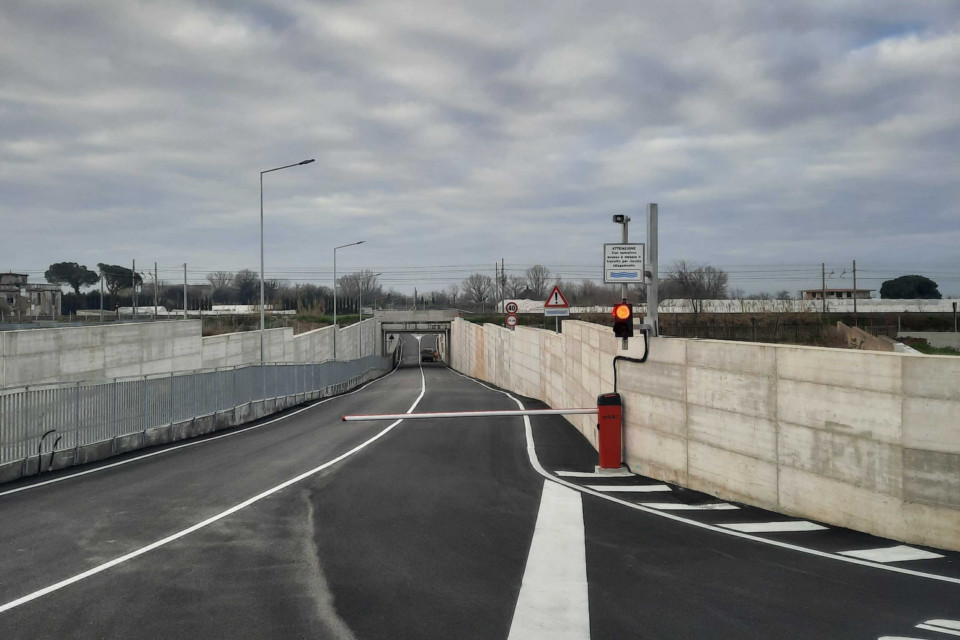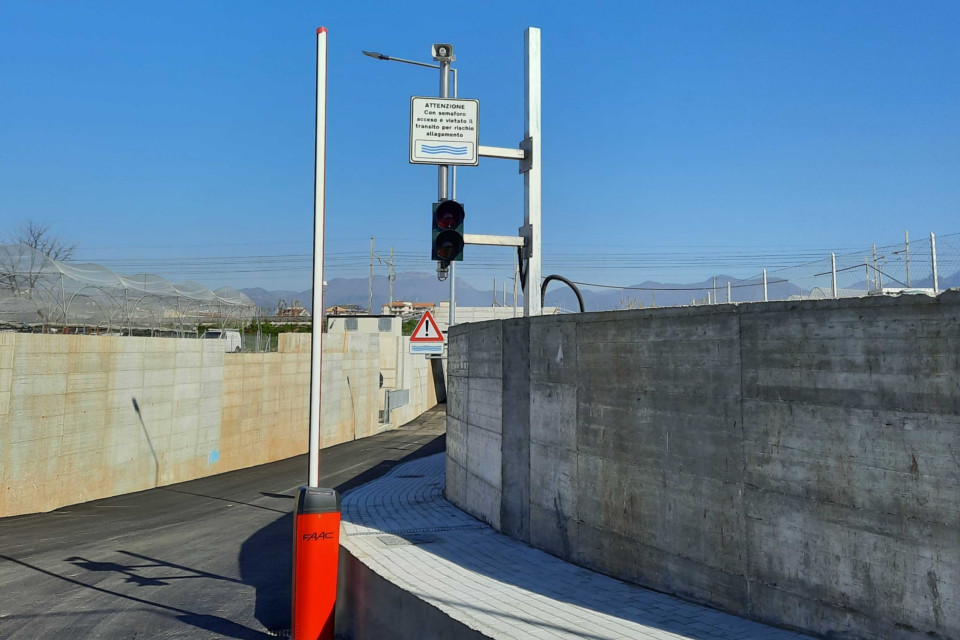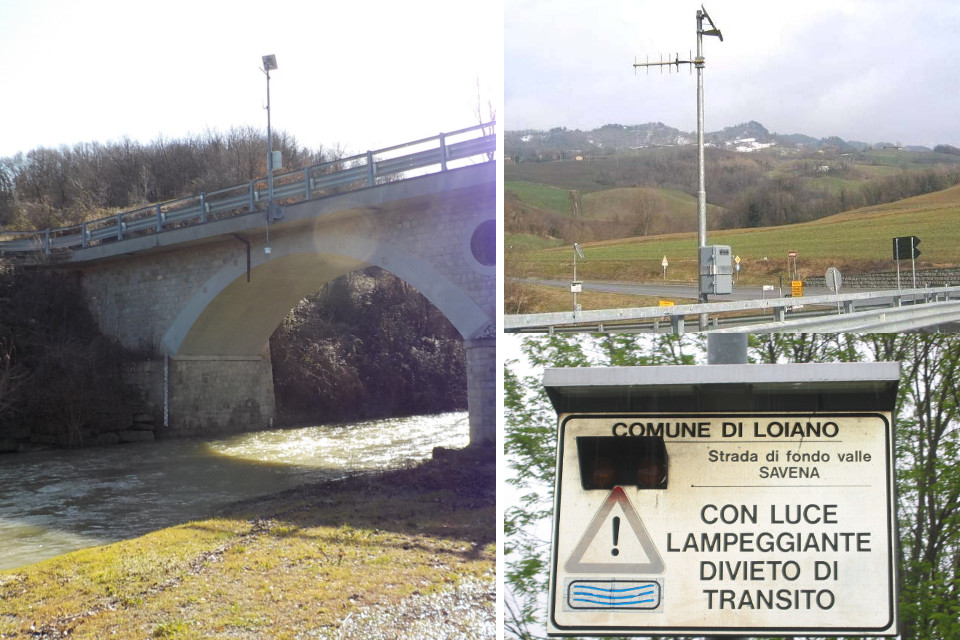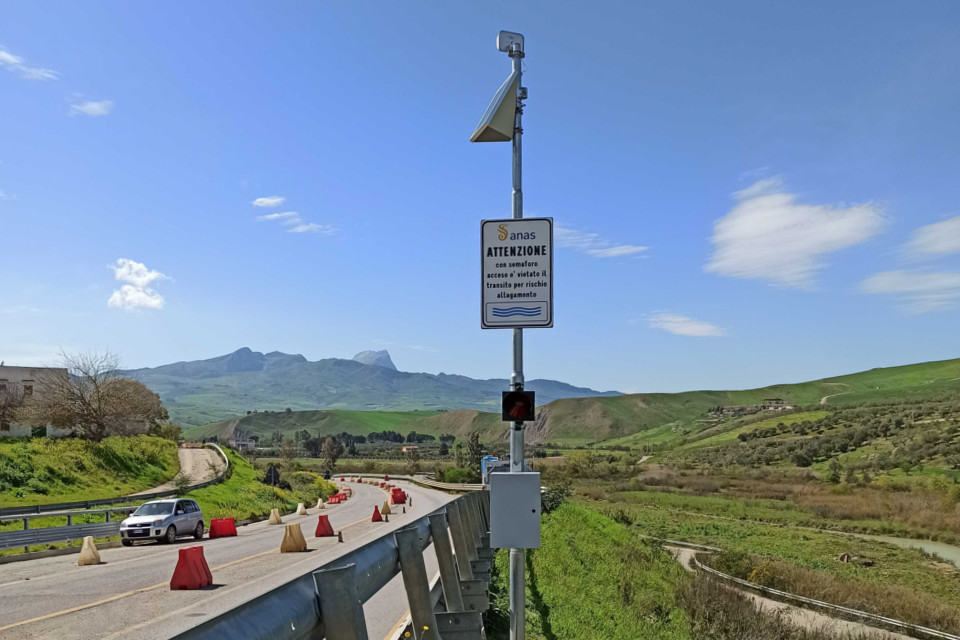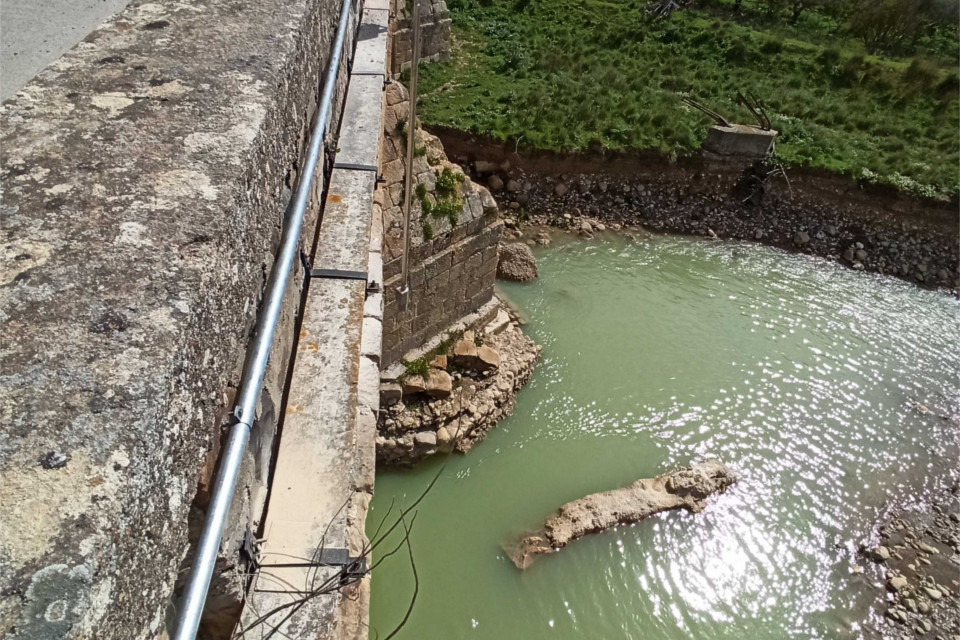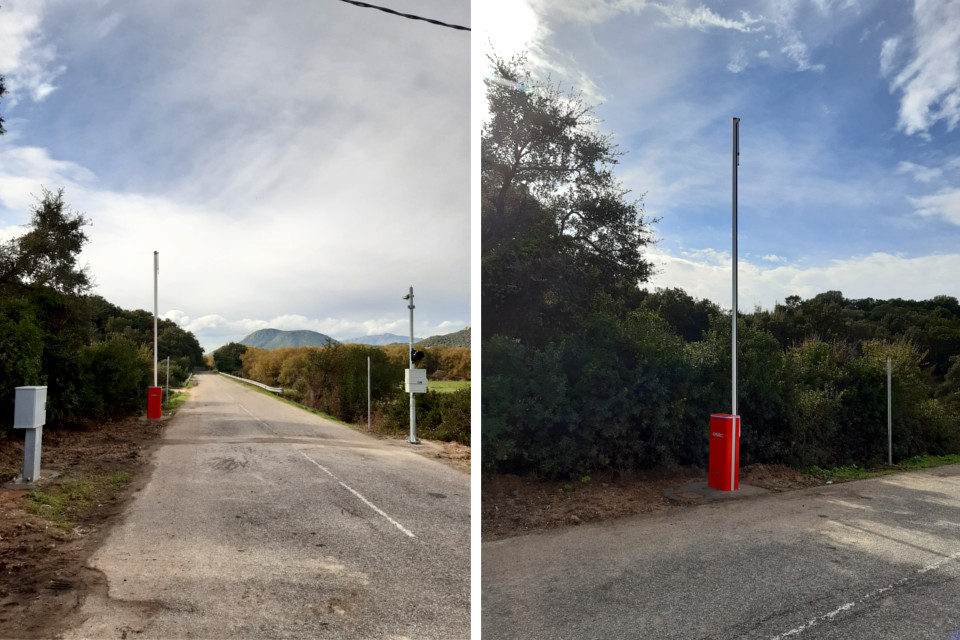Early warning systems for roads and motorways: the case of the A24
A new case of a local early warning system for securing a raised section of the A24 motorway for crossing the Tordino river near the city of Teramo (TE). CAE has installed an automatic station with a WLR/L radar hydrometer and a camera for the acquisition of images relating to the area to be monitored and in particular the 5-meter-high hydrometric rod.
The system allows to define warning/pre-alarm/alarm thresholds by the system operators, which will form the basis of the automatic early warning system to generate alarm signals via SMS, to the persons in charge of emergency management. The system, required by the Park Roads Authority, is now managed by ANAS, which can boast a new measuring point to constantly monitor the status of its network and ensure its safety to those who pass through it.
Considering only the competence of the Anas road network, there are over 11,000 bridges and viaducts in our country. In addition to structural monitoring, it is essential that road managers monitor the surrounding natural conditions since, for example, the hydrodynamic action of a watercourse can decrease the stability of bridge piles; similarly, the movements of the geological layers of the slopes in support of the ends of the bridge, whether caused by the variation of the water level in the subsoilor not, can compromise the usability of the structure for citizens. Last but not least, as in the case of the Tordino viaduct, when a bridge is located above a river in flood that may flood the road, local warning systems are the only solution capable of guaranteeing immediate action, without having reach for the analysis department in the Headquarters or depending on a natural person, in order to concretely safeguard the safety of people travelling on the bridge; therefore, the control of these parameters becomes even more important also for civil protection purposes.
CAE has acknowledged the importance of this type of system for many years, since they are capable of generating alerts even at local level. One of the first ones was built in Emilia-Romagna, near Loiano, on the Savena stream in the early 2000s, a system, equipped with 2 hydrometers, which, when exceeding a defined threshold, sent a signal to signs that turned on their light to indicate the prohibition to transit due to the risk of flooding.
Since then, there have been many great examples in which systems have been created to protect the safety of drivers, such as the one for the San Leonardo viaduct along the SS121 Palermo-Agrigento road, in Sicily (for more information click here) or that of ANAS Sardegna for the Oloè bridge, on the SP46 Provincial Road, which consists of 5 stations and uses bars to inhibit traffic, minimising the risk that may arise in some cases even due to the driver’s failure to comply with signs or traffic lights (for more information, click here).
A great example is also the double warning system, located on the Riccò and Scodognastreams, each with a hydro-pluviometric station, and a traffic light control system, as well as the systems designed to inhibit traffic when the underpasses are flooded and therefore cannot be crossed safely, such as those of Battipaglia, Rubiera, Pescara, Giulianova, Montesilvano, Francavilla al Mare, Tortoreto, etc.
These are only a few examples of local early warning systems created by CAE, all with the same operating logic and with the same purpose, in terms of safeguarding the population, but capable of meeting the most varied needs according to the type of danger to which the specific road section is subjected.
Back to the news index

